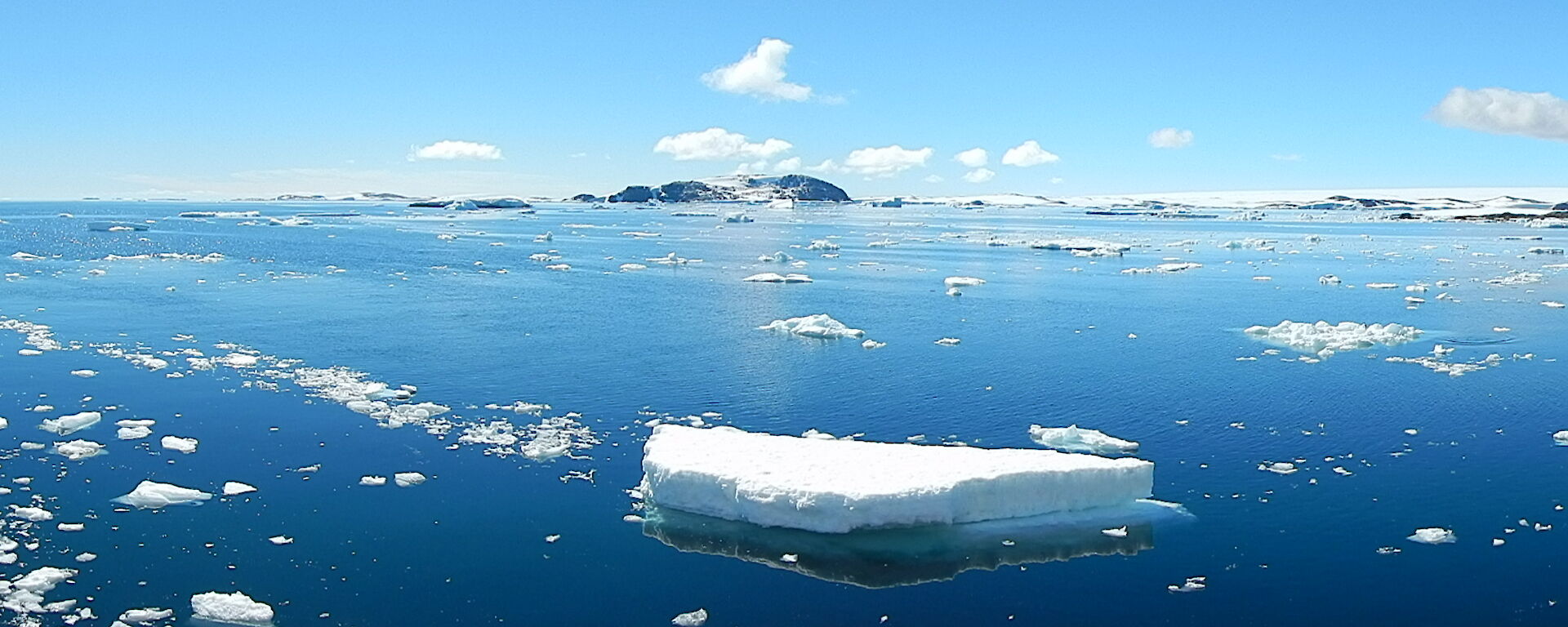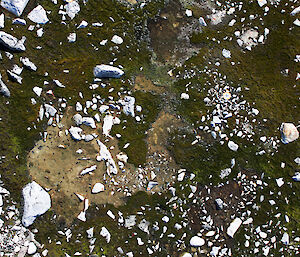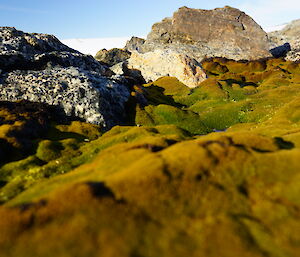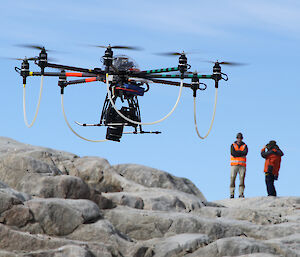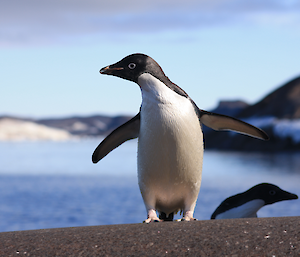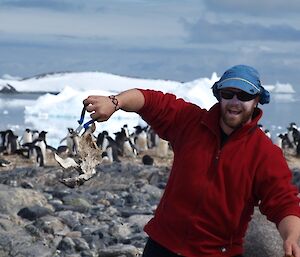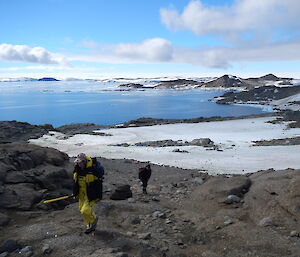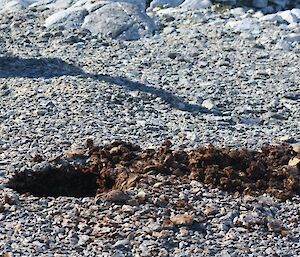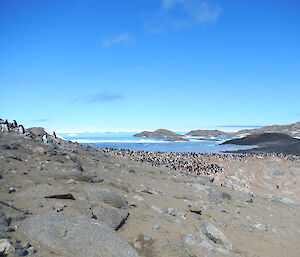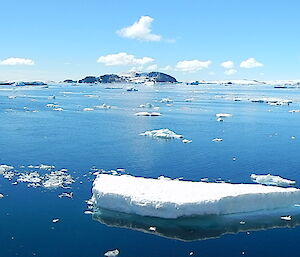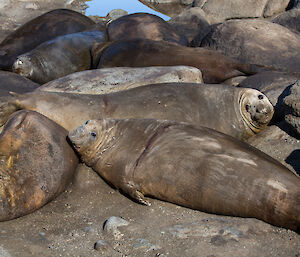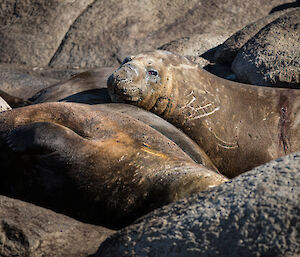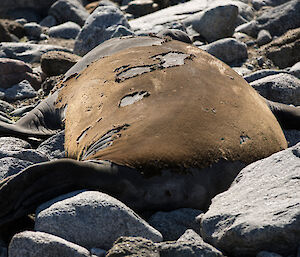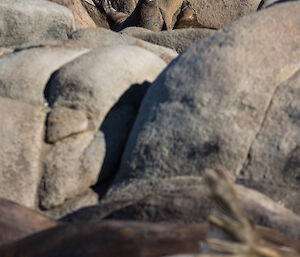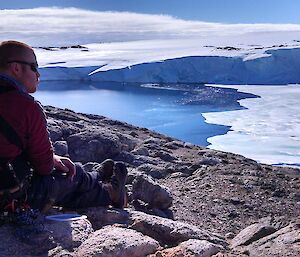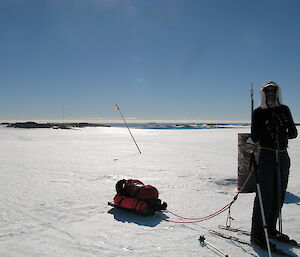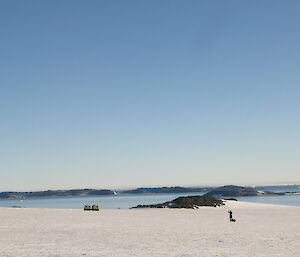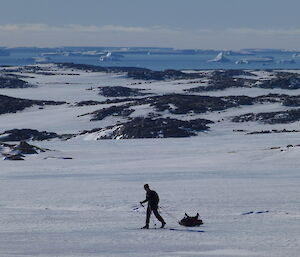The Casey station surroundings possess one of the largest moss beds in the Eastern Antarctic region. Just around the corner of station limits is an Antarctic Specially Protected Area called ASPA 135, with a significant population of three moss species (Schistidium antarctici, Ceratodon purpureus, and Bryum pseudotriquetrum). Another unprotected but stable moss population is growing at the Robinson Ridge (Robbos), and the largest moss bed is located in Stevenson’s Cove (Clarke peninsula).
For the past few decades Antarctica has experienced changes in temperature, wind speed and stratospheric ozone levels. Decline of mosses, which are very well-adapted to the harsh Antarctic climate, can be seen as an indicator of these climate changes. Mosses are fragile non-vascular plants that are sensitive to any mechanical damage, especially to trampling. To minimise impact of walking through moss beds, scientists from University of Tasmania and University of Wollongong are using light-weight drones — multirotor helicopters (oktokopters) — to investigate the current abundance and health of the Casey moss beds.
In the last four weeks their micro oktokopter flew several times equipped with a standard and a multispectral camera to collect images of moss turfs around Casey. Images stitched into a single mosaic will serve as input for spatial assessment of actual moss bed health. Repeating this survey in future years will allow them to monitor temporal changes of moss bed size and general vigour. Apart of the moss work they also acquired aerial images of the old Casey station, which should help with future soil decontamination at this location. They also performed a short video flight over the abandoned US/AUS Wilkes station in order to document its current appearance. This scientific work is showing that although operating microdrones in Antarctica is quite a challenging task, mainly due to the freezing temperatures and unexpected wind gusts, it is proving to be a very valuable tool for detailed mapping of the station grounds and nearby areas.
Zbyněk Malenovský

